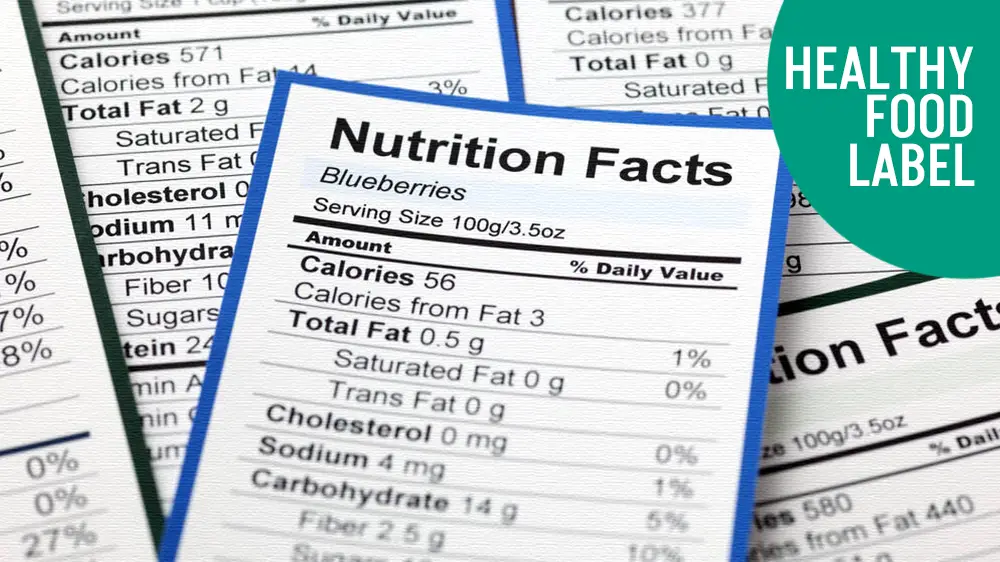
HEALTH NEWS
Understanding The FDA's Definition of Healthy Food Labels
-
 Rahul Priydarss
Rahul Priydarss - February 15, 2024
Explore the FDA’s criteria for defining healthy food labels, including fat content, sodium levels, presence of beneficial nutrients, and overall calorie content. Learn how these standards impact food choices and discover the responsibilities of both food manufacturers and consumers in ensuring compliance with FDA regulations.
Introduction:
In today’s health-conscious society, it is paramount to understand the nutritional content of the foods we consume. Food labels serve as our guides, providing valuable information to help us make informed choices about what we eat. Among the various labels and claims, the “healthy” label stands out as a marker of nutritious choices. Let’s explore the intricacies of the FDA’s healthy food label definition and what it means for consumers.

Table of Contents
FDA’s Definition of Healthy Food Labels:
The FDA’s definition of a healthy food label is based on specific criteria outlined in its regulations. These criteria include many nutritional aspects, including fat content, sodium levels, cholesterol, the presence of beneficial nutrients, and overall calorie content.
Fat content:
Foods considered healthy should consist mainly of unsaturated fats, which are considered healthier than saturated and trans fats. This requirement ensures that products labeled “healthy” contain minimal amounts of unhealthy fats, thereby reducing the risk of heart disease and other health problems.
Sodium and Cholesterol Levels:
The FDA places limits on sodium and cholesterol levels in foods labeled healthy. Excessive sodium intake can lead to high blood pressure and heart problems, while high cholesterol levels are linked to heart disease. Products must contain moderate amounts of sodium and cholesterol to earn the healthy label, consistent with dietary recommendations for optimal health.
Presence of beneficial nutrients:
The FDA considers the presence of beneficial nutrients when evaluating a food product for the healthy label. These nutrients include essential vitamins, minerals, fiber, and other components that support overall health and well-being. Foods labeled healthy should provide significant amounts of these nutrients, helping consumers meet their nutritional needs.

Calorie Content:
Calorie content plays an important role in determining whether a food product can be labeled as healthy or not. While calorie requirements vary, products labeled healthy should be nutrient-dense without an excessively high-calorie count. This ensures that consumers can enjoy nutritious foods without consuming unhealthy amounts of calories, sugars, or unhealthy fats.
Overall Nutrition Profile:
According to the FDA’s Definition of Healthy Food LabelsThe overall nutritional profile of a food product is considered when evaluating its eligibility for a healthy label. Foods rich in whole grains, fruits, vegetables, and lean proteins are more likely to receive a healthy label from the FDA. These foods contribute to a balanced diet and support overall health.
Responsibility of food manufacturers and consumers:
While the FDA’s Definition of Healthy Food Labels, it is the responsibility of food manufacturers to ensure compliance with these standards. The FDA provides guidance and oversight to help manufacturers understand and enforce labeling regulations. Consumers should also take an active role by reading labels carefully and making informed choices based on their individual dietary needs and preferences.
FAQs about Ischemic Optic Neuropathy:
A1: The FDA considers factors such as fat content, sodium levels, cholesterol, the presence of beneficial nutrients, and overall calorie content.
A2: Foods considered healthy should consist primarily of unsaturated fats, which are considered healthier than saturated and trans fats, reducing the risk of heart disease and other health problems.
A3: The FDA sets limits on sodium and cholesterol levels to ensure that products contain moderate amounts, consistent with dietary recommendations for optimal health.
A4: Foods rich in whole grains, fruits, vegetables, and lean proteins are more likely to receive a healthy label from the FDA because they contribute to a balanced diet and support overall health.
A5: While the FDA sets the standards, it is the responsibility of food manufacturers to ensure that their products meet these criteria. Consumers also play a role by reading labels carefully and making informed choices based on their individual dietary needs and preferences.
-Please remember, to always consult with healthcare professionals or Doctors for personalised advice related to medical conditions.
Conclusion:
The FDA’s definition of a healthy food label includes specific criteria related to fat content, sodium levels, cholesterol, beneficial nutrients, and overall calorie content. Foods that meet these criteria contribute positively to a balanced diet and support overall health and well-being. By understanding these criteria and reading food labels carefully, consumers can make informed dietary choices that promote their long-term health and well-being.




